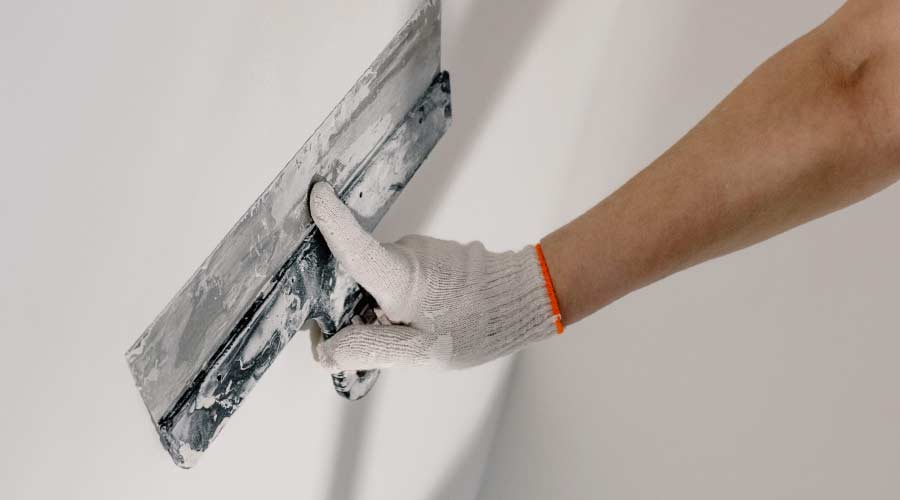
Therefore, eliminate all loose and dirty elements on the wall. Especially for walls in old buildings, it is recommended that the wall is well moisturized. This will make the plaster more durable. To do this, use a tassel or a ceiling brush. If the wall absorbs a lot of moisture, deep primer is a good application. If the wall is made of different types of stone, you can use fabric mats. They significantly reduce the formation of cracks or surface tension.
For example, a trowel with which you can throw the plaster on the wall. It is best to use a stainless steel trowel. Otherwise, rusty spots may form on the wall. Then a trowel is needed for smoothing. A rubbing board and some smaller trowels are also necessary. You can use a cat's tongue to work on the spots on the door frame or window. Use a sponge board to felt the plaster surface as soon as it starts to set. This is also possible with a plastering machine, but this is not recommended for a layman. It mixes the material independently and transports it to the wall on its own. Here, quick processing is absolutely necessary. Therefore, laymen should rather use a sponge board.
Ideally, you should use an electric whisk for this. A drill plus attachment is rather unsuitable for this, because it is not powerful enough to mix everything well. Use a mortar barrel for the material and refrain from using a wheelbarrow. It's pretty much impossible to mix the mortar evenly there. Another way to mix the plaster is to use a construction foil. First you place the material there and press a trough into the center. Fill it with the necessary water. Use a shovel for mixing. If you want to make it easy, you can borrow a mixer from the hardware store.
The substrate determines the type of plaster. Inside, it is recommended to use so-called adhesive plasters, as they can regulate moisture. In bathrooms and similar wet rooms you can use damp room plasters based on lime and cement. With gypsum plaster, mold would form. You can buy ready-mixed adhesive and gypsum plasters. Then you only have to add water. However, it is better if you mix it yourself. This way it adheres better to the wall. First mix lime with cement in a ratio of 2:1 and add the necessary sand. After mixing, add the water.
First, apply the plaster to the wall with a trowel. Then spread it with a smoothing trowel. Use the trowel to work the plaster quickly in circular motions until the surface is even. You can prevent the plaster from crumbling by using the right thickness of plaster. This is available in thicknesses of five to 20 millimeters. When the plaster has reached compressive strength, but at the same time is sufficiently damp, use a felt trowel to eliminate unevenness. Once the wall is completely dry, surface filler and sandpaper will help to remove the remaining irregularities.
With these instructions & rules, every painting becomes a success! You'll learn the four…
If you want to build a garden house yourself, you need to consider several…
In this article you will learn how to plaster the wall quickly and carefully.…